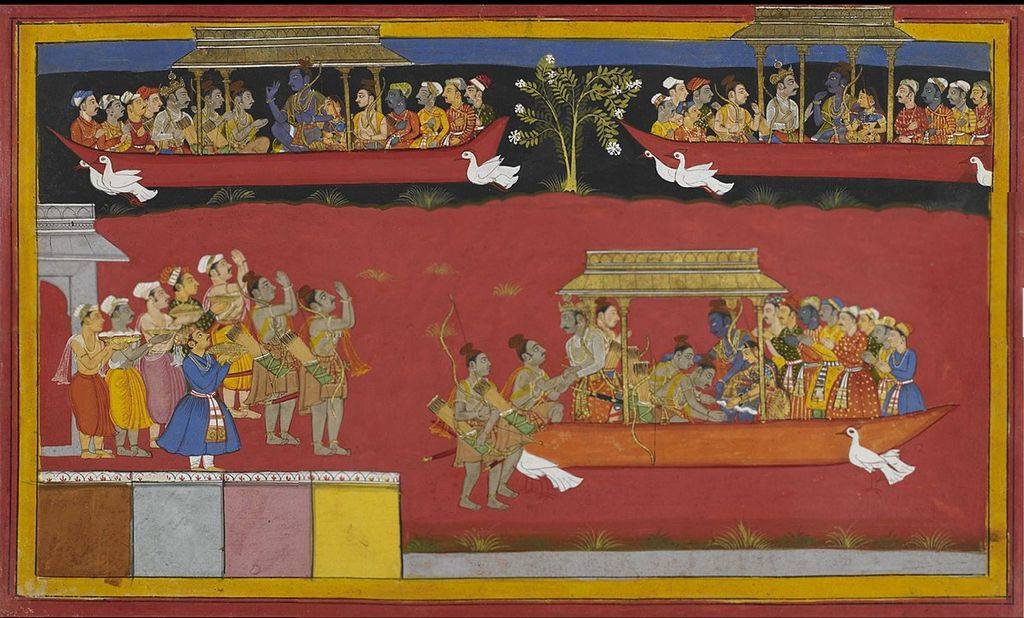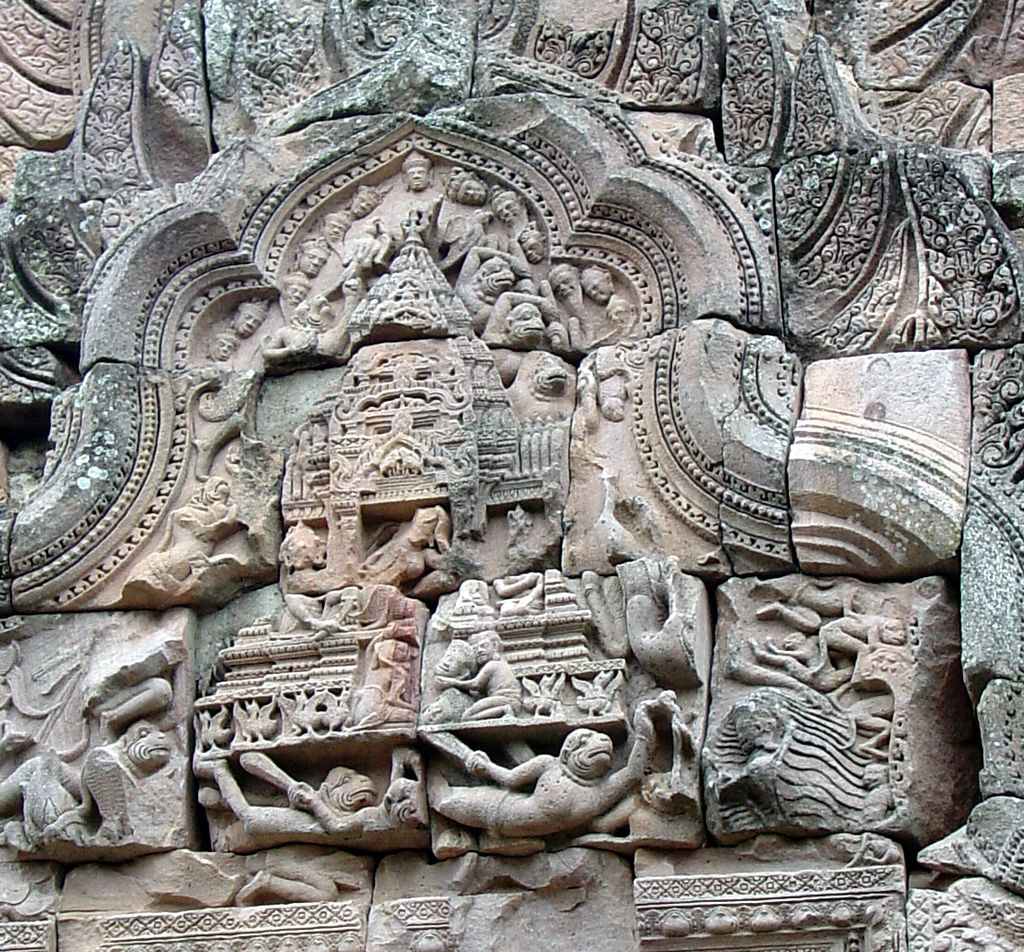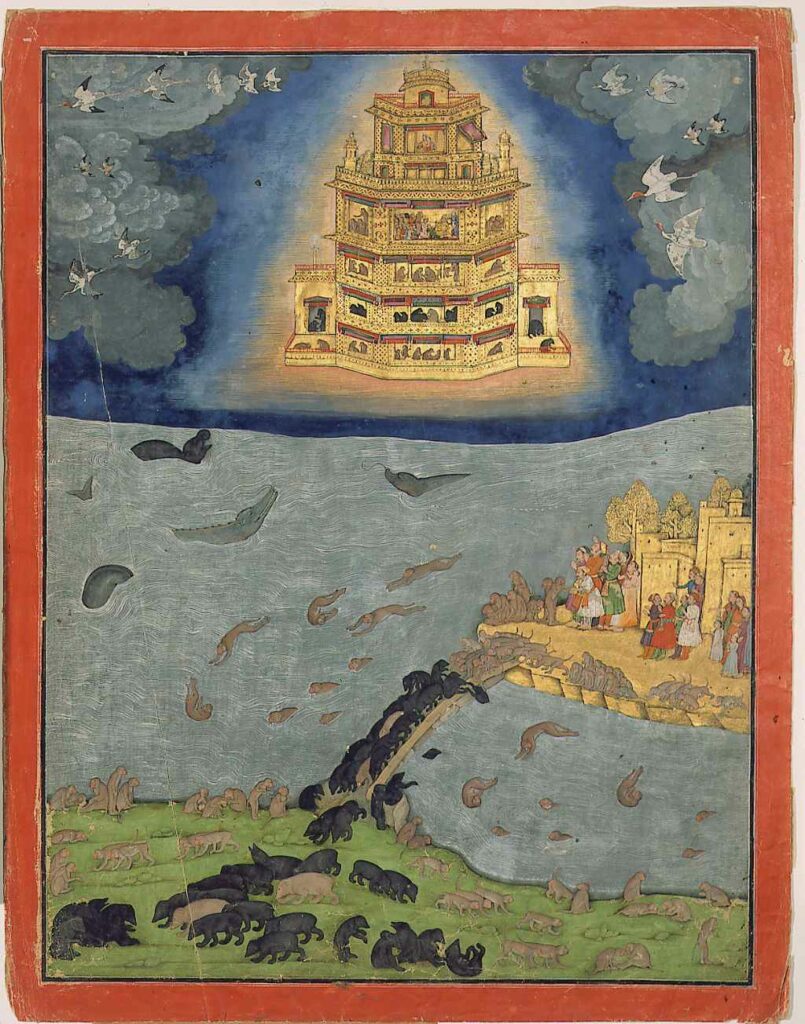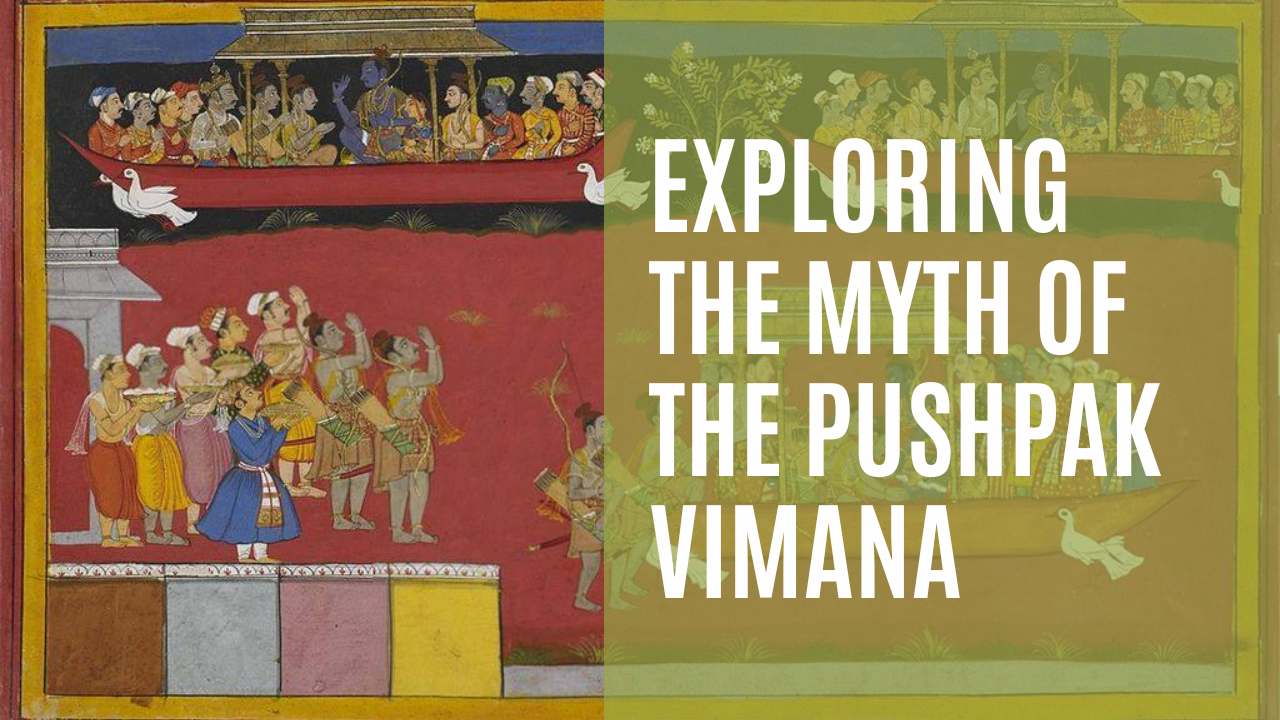The Pushpak Vimana is a legendary flying machine that is mentioned in Hindu and Buddhist texts. It is portrayed as an advanced aircraft that was capable of extraordinary feats, including traveling to other planets and dimensions.
For many, including those who propose that advanced ancient civilizations have existed and are now lost, Pushpak Vimana offers a glimmer of hope to advance their theory.
Further, there is an entire text called ‘The Vimanika Shastra’ which carries a description of advanced aircraft and many other defensive and offensive weapon systems, adding to the claim.
We will explore the myth of the Pushpak Vimana, examining its origins and the various stories and legends associated with it. We will also discuss the scientific and historical evidence (or lack thereof) for the existence of this ancient Indian flying machine.
What is a Vimāna
Vimānas are mythological flying palaces or chariots described in Hindu texts and Sanskrit epics. The “Pushpaka Vimana” of Ravana is the most quoted example of a vimana. Vimana also finds mention in Jain texts.
Origin of advanced flying machines in Indian texts
The predecessors of the flying vimanas of the Sanskrit epics are the flying chariots employed by various gods in the Vedas — the Sun and Indra and several other Vedic deities are transported by flying wheeled chariots pulled by animals, usually horses.
The legendary Vimana finds its first mention in the Ramayana, the Pushpaka (flowery) Vimana of Ravana is described as follows:
“The Pushpaka Vimana that resembles the Sun and belongs to my brother was brought by the powerful Ravana; that aerial and excellent Vimana going everywhere at will … that chariot resembling a bright cloud in the sky … and the King [Rama] got in, and the excellent chariot at the command of the Raghira, rose up into the higher atmosphere.'”
It is the first flying vimana mentioned in existing Hindu texts (as distinct from the gods’ flying horse-drawn chariots).

Pushpaka is said to be originally made by Vishwakarma for Brahma, the Hindu god of creation — later Brahma gave it to Kubera, the God of wealth — but it was later stolen, along with Lanka, by his half-brother, king Ravana in the epic Ramayana.
Maharishi Bharadwaj was a legendary Hindu sage and is mentioned in the ancient Indian texts of the Ramayana and the Mahabharata.
He is said to have been a great scholar and scientist, who possessed advanced knowledge of various fields, including mathematics, astronomy, and engineering.
According to Hindu tradition, Maharishi Bharadwaj was the son of the sage Brihaspati and the grandson of the great Hindu deity Brahma. He was a contemporary of the great Hindu warrior Rama and is said to have advised Rama on various matters during his life.
Maharishi Bharadwaj is also said to have written several treatises on various subjects, including the science of aeronautics.
In these treatises, he is said to have described the construction and operation of advanced flying machines called “vimanas” that were used in ancient India. However, most historians and scientists regard these accounts including that of Ramayana and Mahabharata as mythological, rather than historical.
There is no scientific or historical evidence to prove that Ramayana and Mahabharata are anything other than fictional accounts. This is contrary to the belief of many Indians who believe in the historical nature of these epics, but we are not talking about religion here.
The existing Rigveda versions do not mention vimanas, but verses from, RV 1.164.47-48, also known as ‘The Riddle Hymn’, were taken as proof for a spacecraft by Indian philosopher and social leader Dayananda Saraswati who believed in the infallible authority of the Vedas.
47. Along the dark course, tawny well-feathered (birds) [=flames], clothing themselves in the waters, fly up toward heaven.
These have returned here (as rain) from the seat of truth [=heaven]. Only then is the earth moistened with ghee.
48. The chariot wheel (of the Sun) is one, its wheel segments are twelve, and its wheel naves are three: who understands this?
They [=the days] that wander on and on are fitted together on that, like three hundred pegs, like sixty (more).
-Translator: [Stephanie W. Jamison, Joel P. Brereton]
Dayananda Saraswati interpreted these verses to mean:
“jumping into space speedily with a craft using fire and water … containing twelve Stamghas (pillars), one wheel, three machines, 300 pivots, and 60 instruments.”
Others may interpret it merely as a fancy way of saying the year is made of 12 months or 3 seasons or about 360 days, clearly an individual interpretation and far from any evidence of the ancient flying machines.
Ashoka, who is a proven historical individual mentions Vimana (an “aerial chariot”) as part of the festivities or processions which were organized during his reign.
In times past, for many hundreds of years, there had ever been promoted the killing of animals and the hurting of living beings, discourtesy to relatives, (and) discourtesy to Sramanas and Brahmanas. But now, as a consequence of the practice of morality on the part of king Devanampriya Priyadarsin, the sound of drums has become the sound of morality, showing the people representations of aerial chariots, elephants, masses of fire, and other divine figures.
— Ashoka, Major rock Edict no IV
He is essentially giving an account of his religious beliefs and belief in the myth.
These early accounts of Pushpak Vimana do not provide any evidence that can be interpreted in a scientific or historical way. At most these are anecdotal accounts of a legend that is a common trait among all the legends in every culture across the world.
Now, it is essential to analyze the concept of Vimana and Vimanika Shastra the treatise on aeronautics that has fascinated many and has been taken as proof that some ancient flying machines were possible.
Concept of Vimana
The word “vimana” is derived from the ancient Sanskrit language. In Sanskrit, the word “vimana” means “measuring out, traversing” or “having been measured out”.
Monier Monier-Williams defines vimāna as “a car or a chariot of the gods, any self-moving aerial car sometimes serving as a seat or throne, sometimes self-moving and carrying its occupant through the air — other descriptions make the Vimana more like a house or palace — and one kind is said to be seven stories high”, and quotes the Pushpaka Vimana of Ravana as an example.
It may denote any car or vehicle, especially a bier or a ship as well as the palace of an emperor, especially with seven stories.
Nowadays, vimāna, vimān, or Biman means “aircraft” in Indian languages. For example in the town name Vimanapura (a suburb of Bangalore) and Vimannagar, a town in Pune. In another context, Vimana is a feature of Hindu temple architecture.
The concept of vimanas is found in many ancient Indian texts, including the Ramayana and the Mahabharata. In these texts, vimanas are described as advanced flying machines that were used by gods and demigods to travel great distances, and even visit other planets.
Some descriptions of vimanas even suggest that they were capable of time travel and other advanced capabilities.

Despite the popularity of the concept of vimanas in ancient Indian texts, there is no scientific or historical evidence to support the existence of these advanced flying machines. Most historians and scientists regard the idea of vimanas as a myth or legend, rather than a historical reality.
Vimanika Shastra the treatise on aeronautic
The Vimanika Shastra is a Hindu treatise on aeronautics, believed to have been written by Pandit Subbaraya Shastry (1866–1940), who dictated it during the years 1918–1923.
It is said to describe the construction and operation of advanced flying machines called “vimanas” that were used in ancient India.

The Vimanika Shastra is a controversial text, as it describes a type of advanced flying machine that is not supported by any scientific or historical evidence.
The text is believed to have been written by Pandit Subbaraya Shastry in the early 20th century, and it claims to be based on an ancient Hindu text called the Samarangana Sutradhara.
Samarangana Sutradhara has some visionary speculative verses as well, such as envisioning machines that could fly. However, the author states that he will “not explain how to construct such machines, for the sake of secrecy.”
According to the Vimanika Shastra, the vimanas were circular or elliptical flying machines that were powered by a type of mercury-based engine. They were capable of traveling great distances at incredible speeds, and could even travel to other planets.
The text also describes various weapons and defensive systems that were used on the vimanas, including lasers and other advanced technology.
However, most historians and scientists regard the Vimanika Shastra as a work of fiction, as it contains many impossible and fantastical claims that are not supported by any scientific or historical evidence.
A study by aeronautical and mechanical engineering at the Indian Institute of Science, Bangalore in 1974 concluded that the aircraft described in the text was “poor concoctions” and that the author showed a complete lack of understanding of aeronautics.
The study is published and widely available for anyone to read.
The scientific study completely destroys the Vimanika Shastra to be any form of credible text. Some of the observations from the study are mentioned here.
| None of the planes has properties or capabilities of being flown — the geometries are unimaginably horrendous from the point of view of flying, and the principles of propulsion make them resist rather than assist flying. The text and the drawings do not correlate with each other even thematically. The drawings definitely point to a knowledge of modern machinery. This can be explained on the basis of the fact that Shri Ellappa who made the drawings was in a local engineering college and was thus familiar with the names and details of some machinery. Of course, the text retains a structure in language and content from which its ‘recent nature cannot be asserted. We must hasten to point out that this does not imply an oriental nature of the text at all. All that may be said is that thematically the drawings ought to be ruled out of the discussion. And the text, as it stands, is incomplete and ambiguous by itself and incorrect in many places. |
Additionally, there is no record of any ancient civilization having the technology or knowledge to build and operate flying machines like the vimanas described in the text.
For these reasons, the Vimanika Shastra is not considered a reliable source of information on ancient Indian aeronautics.
The ancient flying machines — Pushpak Vimanas– are as wonderous as they may sound, remain a legend, and are not real. It should be cherished the way National flag carrier Biman Bangladesh Airlines is named ‘Biman Bangladesh Airlines’, clearly derived from the same Vimana.



